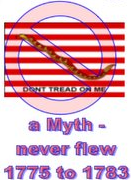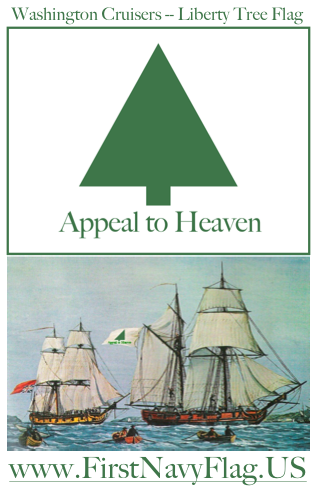

Summary of "The First Navy Jack," by Peter Ansoff. It is published in Raven: A Journal of Vexillology, Vol. 11 (2004). (underline and bold added)
Page 2: “The First Navy Jack (Figure 1)” (Editor Note: Snake Over Stripes flag) “is a well-established part of American lore.” (Editor Note: More accurate than “well-established” would be to say “widely accepted” part of American lore.) … It has been an icon of the United States Navy since 1975-76, when all ships flew it to commemorate the bicentennial of the Navy and the United States…. The terrorist attacks of 11 September 2001 increased the popularity of the “rattlesnake and stripes” as a defiant symbol of national unity and resolve, both in the Navy and among the general public.”
“In fact, however, there is little evidence that his flag was flown by Commodore Hopkins in 1775, or that it even existed during the American Revolution.”
Page 9: Under the header “The Flags in the Thomas Hart Portrait”
“It appears that the naval historian Samuel Eliot Morison was correct when he made this comment: The mezzotint portrait of Esek Hopkins published in England… is a work of imagination by someone who never saw Hopkins or his ships… the flags are fantastic.”29
Page 10: “Third, 18th-century British and European illustrators often used the stretched-out “crawling rattlesnake” as a symbol of the American revolutionary cause, whereas there is no other known evidence that it was ever used on American flags.”35
Page 10: “In summary, the evidence strongly suggests that the striped rattlesnake flag depicted in the Hart engraving was not a realistic depiction of an American naval flag, any more than the palm tree in his Arnold portrait accurately depicted the flora of Canada.”
Page 12: “Nevertheless, the Hart image of Hopkins and its many descendants are standard illustrations in books and websites dealing with the Continental Navy and the Revolutionary War. 43 Generations of flag historians have assumed them to be authentic, and have built upon them a legend of the First Navy Jack –
an historic flag that never was.”
The legend of the Snake Over Stripes was step by step furthered by several books:
1830 Biography of John Paul Jones by Robert Sands
1839 History of the Navy of the United States of America by James Fenimore Cooper
1850 Pictorial Field-Book of the Revolution by Benson Lossing
1864 The History of our Flag by Ferdinand Sarmiento
1872 History of the Flag of the United States of America by RADM George Preble
1880 The Flag of the United States and Other National Flags by RADM George Preble
In his 1880 book Admiral Preble tried to correct his previous error in the 1872 book about the existence of the Snake Over Stripes flag. But the snake flag myth survived!
Page 20: Dr. Whitney Smith, founder and director of the Flag Research Center, has said of Preble’s work:
“…Original research is time-consuming and demanding and it’s easy to assume that published sources are correct and can be trusted. Those who have written books and articles or have created web sites about American flags have for the most part relied on work done by Preble. As a result there is a constant repetition of misinformation that gives certain designs the impression of accuracy.” 64
Monday, December 12, 2005
1 page Exec. Summary of Raven Journal Article against Snake flag as First Navy Flag
Posted by
"George Washington" 'States'Manship
at
Monday, December 12, 2005
![]()
![]()
Subscribe to:
Post Comments (Atom)










No comments:
Post a Comment